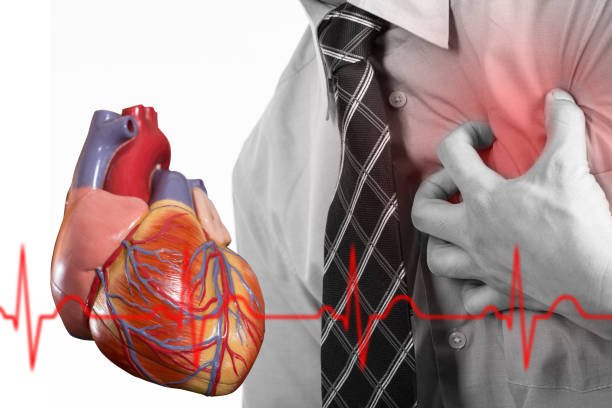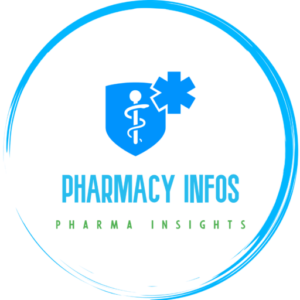Atenolol is a medication primarily used to treat cardiovascular conditions, particularly hypertension (high blood pressure) and certain types of heart disease. As a beta-blocker, atenolol works by blocking the action of adrenaline on the heart and blood vessels. This helps to lower heart rate, blood pressure, and the amount of work the heart has to accomplish.
Originally developed in the 1970s, atenolol has become a widely prescribed medication due to its effectiveness and relatively few side effects compared to other beta-blockers. It is available in both brand-name and generic forms and is typically taken orally in the form of tablets.

Understanding the role of beta-1 adrenergic receptors:
Beta-1 adrenergic receptors are a subtype of adrenergic receptors found primarily in the heart, although they are also present in other tissues such as the kidneys. These receptors are part of the sympathetic nervous system, which is responsible for the body’s “fight or flight” response.
Location: Beta-1 adrenergic receptors are predominantly located in the heart, specifically in the sinoatrial (SA) node, atria, and ventricles. They are also found in the kidneys, where they play a role in renin release.
Activation: These receptors are activated by the catecholamines adrenaline (epinephrine) and noradrenaline (norepinephrine), which are released by the sympathetic nervous system in response to stress or excitement.
Effects: When beta-1 adrenergic receptors are stimulated, they increase heart rate (positive chronotropic effect), enhance the force of contraction of the heart muscle (positive inotropic effect), and promote the release of renin from the kidneys. These effects help to increase cardiac output and blood pressure, preparing the body for physical exertion or stress.
Atenolol mechanism of action:
Atenolol, a selective beta-1 adrenergic receptor antagonist, exerts its pharmacological effects through a precise mechanism of action primarily targeting the cardiovascular system.
Here’s a comprehensive breakdown of how atenolol works:
Beta-Adrenergic Receptor Antagonism: Atenolol selectively blocks beta-1 adrenergic receptors found primarily in the heart, as opposed to beta-2 adrenergic receptors found in other tissues like the lungs and blood vessels. By doing so, it competitively inhibits the binding of adrenaline (epinephrine) and noradrenaline (norepinephrine) to these receptors.
Reduction in Heart Rate: Atenolol’s blockade of beta-1 receptors in the sinoatrial node of the heart reduces the heart’s response to sympathetic stimulation. This leads to a decrease in the heart rate (chronotropic effect), resulting in a slower and more regular heartbeat.
Decrease in Myocardial Contractility: Atenolol decreases the force of contraction of the heart muscle (negative inotropic effect) by inhibiting the action of adrenaline and noradrenaline on beta-1 receptors in the myocardium. This reduces the heart’s oxygen demand and workload, making it particularly beneficial in conditions like angina and heart failure.
Decreased Cardiac Output: By reducing both heart rate and myocardial contractility, atenolol lowers cardiac output, which is the amount of blood pumped by the heart per minute. This helps to reduce blood pressure and myocardial oxygen consumption.
Lowering of Blood Pressure: Atenolol’s effects on heart rate, myocardial contractility, and cardiac output collectively lead to a decrease in blood pressure. This is especially useful in the treatment of hypertension, as it helps to relax blood vessels and improve blood flow while reducing the workload on the heart.
Antiarrhythmic Effects: Atenolol can help stabilize the heart’s electrical activity by blocking beta-1 receptors in the cardiac conduction system. This can be beneficial in the management of certain types of arrhythmias (irregular heart rhythms).
Uses Of Atenolol:
Hypertension (High Blood Pressure):
Atenolol is commonly prescribed to manage high blood pressure, either alone or in combination with other antihypertensive medications.
By blocking the action of adrenaline on the heart and blood vessels, it helps to lower blood pressure, reducing the workload on the heart and decreasing the risk of cardiovascular complications.
Angina Pectoris:
Reduced blood supply to the heart muscle causes angina, which is characterized by chest pain or discomfort that is well treated with atenolol.
By slowing down the heart rate and reducing the force of contractions, atenolol decreases the oxygen demand of the heart, thus relieving angina symptoms and improving exercise tolerance.
Prevention of Heart Attacks:
Atenolol is sometimes used as a preventive measure in individuals at high risk of heart attacks, particularly those with a history of coronary artery disease or previous heart attacks.
By reducing heart rate and blood pressure, atenolol helps to decrease the workload on the heart, thereby reducing the risk of cardiac events.
Arrhythmias:
Atenolol may be prescribed to manage certain types of abnormal heart rhythms (arrhythmias), such as atrial fibrillation or supraventricular tachycardia.
By slowing down the electrical impulses in the heart, atenolol helps to stabilize heart rhythm and prevent episodes of rapid or irregular heartbeat.
Heart Failure:
In some cases, atenolol may be used as adjunctive therapy in the management of heart failure, especially in patients with systolic heart failure.
By blocking the effects of adrenaline, atenolol can help to reduce the strain on the heart and improve its function in certain heart failure patients.
Migraine Prophylaxis:
Atenolol is sometimes prescribed off-label for the prevention of migraines, particularly in individuals who experience frequent or severe migraine attacks.
While the exact mechanism is not fully understood, atenolol is believed to exert its migraine-preventive effects through its actions on blood vessels and neurotransmitters in the brain.
Anxiety Disorders:
In some cases, atenolol may be used off-label to alleviate symptoms of performance anxiety or situational anxiety, particularly in situations where symptoms such as tremors or palpitations are problematic.
By reducing physiological symptoms associated with anxiety, such as increased heart rate and trembling, atenolol can help individuals manage their anxiety symptoms more effectively.
Bioavailability:
The bioavailability of a medication refers to the proportion of the administered dose that reaches the bloodstream and is available to exert its therapeutic effects. For atenolol, its bioavailability is relatively high, typically ranging from 50% to 60% when taken orally.
Here are some factors that influence the bioavailability of atenolol:
First-Pass Metabolism: Like many orally administered drugs, atenolol undergoes first-pass metabolism in the liver after absorption from the gastrointestinal tract. During this process, a portion of the drug is metabolized before it reaches systemic circulation, which can reduce its bioavailability.
Food Interactions: While atenolol can be taken with or without food, the presence of food in the stomach can affect its absorption. In some individuals, taking atenolol with food may slightly delay its absorption but does not significantly alter its overall bioavailability.
Liver Function: Liver function can influence the metabolism and elimination of atenolol. Individuals with impaired liver function may experience altered pharmacokinetics, potentially affecting the drug’s bioavailability.
Drug Formulation: The formulation of atenolol can also impact its bioavailability. Immediate-release formulations are absorbed more rapidly than extended-release formulations, leading to differences in peak plasma concentrations and overall bioavailability.
Genetic Factors: Genetic variations in drug-metabolizing enzymes and transporters can affect the pharmacokinetics of atenolol, potentially influencing its bioavailability in certain individuals.
Atenolol Drug Interactions:
Atenolol, like other medications, can interact with various drugs, supplements, and substances, potentially altering its effectiveness or increasing the risk of adverse effects.
Here are some notable drug interactions with atenolol:
Other Antihypertensive Medications: Combining atenolol with other antihypertensive drugs such as diuretics, ACE inhibitors, or calcium channel blockers may lead to additive blood pressure-lowering effects. This can increase the risk of hypotension (low blood pressure) and its associated symptoms, such as dizziness and fainting.
Calcium Channel Blockers: Atenolol may interact with calcium channel blockers, leading to additive negative effects on heart rate and cardiac conduction. This combination can increase the risk of bradycardia (slow heart rate) and heart block.
Alpha-Blockers: Combining atenolol with alpha-blockers, which are also used to treat hypertension, may result in additive blood pressure-lowering effects and increase the risk of orthostatic hypotension (a sudden drop in blood pressure upon standing up).
Nonsteroidal Anti-Inflammatory Drugs (NSAIDs): NSAIDs such as ibuprofen and naproxen can reduce the antihypertensive effects of atenolol and other beta-blockers by inhibiting their vasodilatory effects on blood vessels. NSAIDs may also increase the risk of kidney damage when taken with atenolol, particularly in individuals with pre-existing kidney disease.
Sympathomimetic Agents: Drugs with sympathomimetic properties, such as certain decongestants, bronchodilators, and stimulants, can counteract the effects of beta-blockers like atenolol. This can lead to increased blood pressure and heart rate, as well as worsening of underlying cardiovascular conditions.
Insulin and Oral Antidiabetic Drugs: Atenolol may mask some of the symptoms of hypoglycemia (low blood sugar), such as tachycardia (rapid heart rate), which can make it more challenging for individuals with diabetes to recognize and treat hypoglycemic episodes.
Monoamine Oxidase Inhibitors (MAOIs): Concurrent use of atenolol with MAOIs, a class of antidepressants, may result in an exaggerated decrease in blood pressure and may increase the risk of hypertensive crisis.
Lidocaine: Atenolol can increase the plasma concentration of lidocaine, a local anesthetic, potentially leading to enhanced lidocaine effects and an increased risk of toxicity.
Overdose:
Overdose of atenolol can lead to serious complications and requires prompt medical attention. Symptoms of overdose may include:
Bradycardia: Atenolol can excessively slow down the heart rate, leading to bradycardia (a heart rate slower than 60 beats per minute). This can cause symptoms such as dizziness, fatigue, fainting, and shortness of breath.
Hypotension: Atenolol overdose can cause a significant drop in blood pressure, leading to symptoms such as dizziness, lightheadedness, weakness, and fainting. In severe cases, hypotension can result in shock, a life-threatening condition characterized by inadequate blood flow to vital organs.
Bronchospasm: Atenolol can exacerbate bronchospasm in individuals with underlying respiratory conditions such as asthma or chronic obstructive pulmonary disease (COPD). Chest tightness, wheezing, and shortness of breath are possible symptoms.
Hypoglycemia Masking: Atenolol can mask some of the symptoms of hypoglycemia (low blood sugar), such as tachycardia (rapid heart rate), making it more challenging for individuals with diabetes to recognize and treat hypoglycemic episodes.
Cardiac Conduction Abnormalities: Atenolol overdose can disrupt the electrical conduction system of the heart, leading to various cardiac arrhythmias (irregular heart rhythms) such as atrioventricular (AV) block, ventricular tachycardia, or ventricular fibrillation.
Central Nervous System Effects: In severe cases, atenolol overdose may cause central nervous system symptoms such as confusion, hallucinations, seizures, or coma.
Getting quick medical assistance is essential in cases when an overdose is suspected. Treatment may involve supportive measures to stabilize vital signs, such as intravenous fluids, vasopressors to increase blood pressure, and cardiac monitoring to assess heart rhythm. In cases of severe overdose, antidotes such as glucagon or intravenous calcium may be administered to counteract the effects of atenolol.
Side Effects:
Fatigue or Weakness: Atenolol can cause fatigue or weakness, particularly when starting the medication or when the dosage is increased.
Dizziness or Lightheadedness: Atenolol can cause dizziness or lightheadedness, especially when standing up quickly from a sitting or lying position.
Cold Extremities: Some people may experience cold hands or feet due to decreased peripheral blood flow caused by atenolol.
Gastrointestinal Symptoms: Atenolol may cause gastrointestinal side effects such as nausea, vomiting, diarrhea, or abdominal discomfort in some individuals.
Sexual Dysfunction: Atenolol may occasionally cause sexual side effects such as erectile dysfunction or decreased libido.
Sleep Disturbances: Some individuals may experience sleep disturbances, including insomnia or vivid dreams, while taking atenolol.
